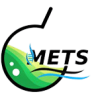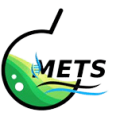Pesticides, Antibiotics & Hormones
Nowadays chemicals such as pesticides, antibiotics and hormones are used in plant and animal farming to boost production, reduce food waste, and ensure adequate food supply. The levels of agricultural and chemical residues that are allowed in foods are considered safe and must represent lowest level possible, complying with best industry practices.
The use of pesticides can dramatically increase crop production and ensure a higher quality of products. In animal farming drugs such as antibiotics and hormones are used to boost growth and cut down feed requirements. However, these chemicals are designed to boost-up the plant & animal farming, residues of these drugs & pesticides can be hazardous to humans. The level of harm from exposure to pesticides, animal antibiotics and hormones is dose related, meaning the more we consume, the greater the potential risk.
In order to control the usage of these types of chemicals, national & international standards set the maximum allowed limits for the agricultural and veterinary chemical residues present in foods.
At METS we are following GSO, ISO, CODEX, KS, SFDA & other standards to monitor the level of Pesticides Testing, Antibiotics Testing & Hormones Testing in the foods. Our highlights are,
- Competence centers with highly sophisticated instruments such as LC-MS/MS, HPLC, GC- FID, GC-MS, GC-MS/MS, FT-IR, ICP, Real-time PCR, CHNSO-analyzer, etc.
- Pesticide residues: Nearby 500 components are coming in our accredited scope
under ISO/IEC 17025: 2017
- Antibiotics: Around 80 plus elements are coming in our scope.
- Hormones: We are performing as per GSO requirements.
Pesticide testing
Testing of pesticide residues (food) is performed on samples of food and beverages, animal feeds, agricultural crops, water, rice and tobacco products. It detects pesticide residue levels in products via chemical and microbiological analysis. The presence of pesticide residue in the manufacturing process can lead to the steady accumulation of harmful chemical residues entering the food chain which subsequently pose threat to the environment. Thus, pesticide residue testing is seeking great implication.
The most common pesticides used in the conventional agricultural system are algaecides, antimicrobials, disinfectants, fungicides, herbicides, insecticides, insect growth regulators, insecticides, rodenticides. Generally, pesticide testing methods are based on LC/MS/MS and GC/MS for rapid quantitative analysis. ISO/DIS 22258(en), ISO 6468:1996, ISO 10382:2007, ISO 6466:1983, ISO 4389:2000, ISO 8260:2008, ISO 3890-1:2009, ISO 3890-2:2009, ISO 14181:2000, ISO 4389:2000, GSO 597:2009, GSO 2050 are some of the international standards recommending GC-MS as the tool for testing pesticide residues. Few lists of methodologies employed LC/MS/MS as the detection tool is as follows:
ASTM D8025-23(TEST METHOD)-Standard Test Method for Determination of Select Pesticides in Water by Multiple Reaction Monitoring Liquid Chromatography Tandem Mass Spectrometry
EN 12393-2 Standard Test for Plant Origin Foods, Multiple Residue Methods for the Determination of Pesticide Residues by GC or LC-MS-MS
ASTM D7645 – 16-Standard Test Method for Determination of Aldicarb, Aldicarb Sulfone, Aldicarb Sulfoxide, Carbofuran, Methomyl, Oxamyl, and Thiofanox in Water by Liquid Chromatography/Tandem Mass Spectrometry (LC/MS/MS)
ASTM D8399-23 – Standard Test Method for Multi-residue Analysis of Pesticides in Dried Cannabis and Hemp Raw Materials Using Liquid Chromatography-Tandem Mass Spectrometry (LC-MS/MS)
AOAC 2007.01- Pesticide Residues in Foods by Acetonitrile Extraction and Partitioning with Magnesium Sulfate Gas Chromatography/Mass Spectrometry and Liquid Chromatography/Tandem Mass Spectrometry
We adopt QuEChERS method, and the accelerated solvent extraction technique with/without automated evaporation; for the sample preparation of gas chromatography–mass spectrometry (GC–MS) and liquid chromatography–mass spectrometry (LC–MS).
Antibiotic testing
Antibiotics are drugs which can be natural, semi-synthetic or synthetic origin. They have been widely used for treatment of bacterial diseases in humans and animals.
Bacitracin, β-lactams (penicillins and cephalosporins), tetracyclines, chloramphenicols, macrolides, spectinomycin, lincosamide, sulphonamides, nitrofuranes, nitroimidazoles, trimethoprim, polymyxins, quinolones, macrocyclics (ansamycins, glycopeptides and aminoglycosides) are few antibiotics used as veterinary medicine
They are important in animal husbandry because they significantly enhance growth when added to animal feed. European Union (EU) legislation has prohibited this practice since 2006 and the MRL for certain antibiotics as per EU 37/2010 are listed below
Bacitracin- 100 μg/kg (milk),
Tetracyclin – 100 μg/kg (Muscle); 300 μg/kg (Liver); 600 μg/kg (Kidney); 100 μg/kg (Milk); 200 μg/kg (Egg)
Spectinomycin- 300 μg/kg (Muscle); 500 μg/kg (Fat); 1000 μg/kg (Liver); 5000 μg/kg (Kidney); 200 μg/kg (Milk)
Sulphonamides- 100 μg/kg (Muscle); 100 μg/kg (Fat); 100 μg/kg (Liver); 100 μg/kg (Kidney)
Trimethoprim- 50 μg/kg (Muscle); 50 μg/kg (Fat); 50 μg/kg (Liver); 50 μg/kg (Kidney); 50 μg/kg (Milk)
For the detection of antibiotic residue, LC-MS is the most employed analytical method, followed by LC-UV and ELISA. ISO 20776-2:2021(en), ISO/TS 23758:2021(en) are some of the standard citing the methodology for antibiotic residue detection.
Hormones testing
Hormones are a class of signaling molecules produced by glands in multicellular organisms that are transported by the circulatory system to organs to regulate physiology and behavior. Some of the hormonal substances used for growth promotion in animals include estradiol-17β, progesterone, testosterone, epinephrine, melatonin, oxytocin, phytoestrogens. The habit of anabolic hormones in animal production is prohibited in the European Union by Directive 96/22/EC and Directive 2003/74/EC (96/22/EC 1996; 2003/74/EC 2003). Therefore, hormones should not be present in animal tissues and no maximum residue level (MRL) is established. Highly specific and sensitive methods of high analytical performance is required for an effective result; thus, employing GC-MS or LC-MS/MS allow the determination of residues of compounds at low concentration levels.


